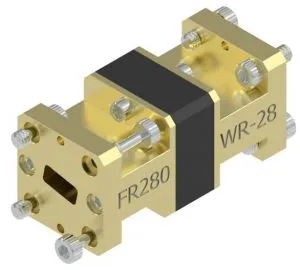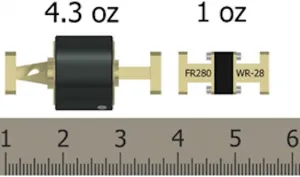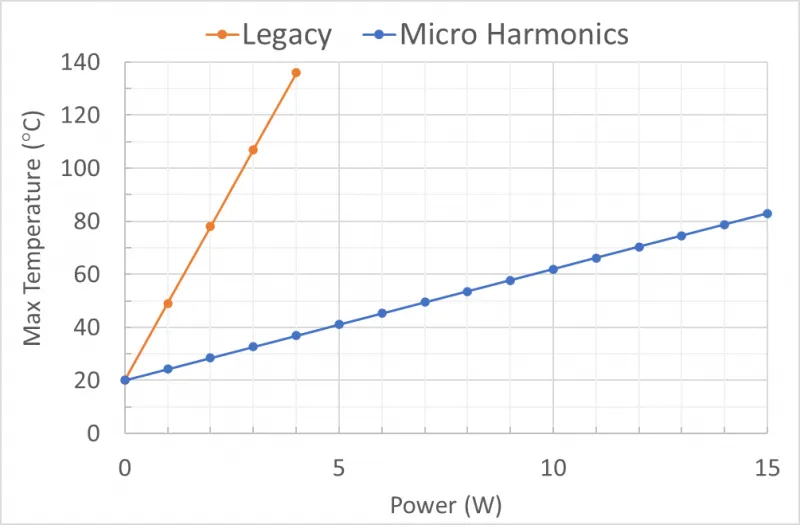There are a lot of Ka-band Faraday rotation isolators on the market. They all look alike and have similar performance. But the Ka-band isolators from Micro Harmonics are unique in several very important ways.
- Compact: Our Ka-band isolators are the smallest waveguide isolators on the market with a cross-section of 0.75” x 0.75” and a length of only 1.6”.
- Low loss: Typical insertion loss is less than 0.5 dB!
- High Power: Our Ka band isolators can handle much higher reverse power levels.
- Resistant to External Magnetic Fields: No need to shield our isolators from other devices.
Whether your system is drone-mounted or on the ground, reducing size and weight is always a priority. The Ka-band isolator from Micro Harmonics is a fraction of the size and weight of traditional Ka-band isolators. The cylindrical center section of the legacy isolators sold by other vendors has a diameter near 1.3 inches (33 mm). The large diameter makes it awkward to integrate the isolator into larger systems.
Why Low Insertion Loss is Important in Ka-Band
Many engineers assume they can just turn up the signal power in Ka-band to offset the high insertion loss of a standard isolator. Often times there is power to spare. But increasing the signal power can causes higher operating temperatures which can: 1) reduce system lifetime, 2) increase thermal noise, 3) increase signal distortion, and 4) escalate costs to the customer. Our Ka-band isolators have a typical insertion loss of less than 0.5 dB which keeps your system operating cooler and longer.
For more information read the Isolators Designed for Low Insertion Loss whitepaper.
Micro Harmonics Isolators Handle Higher Power Levels
Most commercial Ka-band Faraday rotation isolators have a maximum reverse power rating near 2 W. We refer to these as legacy isolators. They have been around for more than 40 years with little change. Many Ka-band systems have higher power requirements. Micro Harmonics isolators employ a unique diamond disc and can handle much higher power levels.
In a Faraday rotation isolator, power in the reverse travelling signal is absorbed in a resistive layer and converted to heat energy. In the legacy isolators sold by other vendors, the resistive layer can get hot because it is thermally insulated from the metal waveguide block. There is no good thermal conduction path and the primary heat dissipation mechanism is convection. But the diamond disc used in the Micro Harmonics isolators provides an excellent path to conduct heat from the resistive layer to the metal block. Diamond is the ultimate thermal conductor having a thermal conductivity nearly 4 times that of copper. Our simulations show a four-fold increase in power handling as indicated in the graph. We typically see a temperature near 50°C in the legacy isolators at the rated power level.
For more information read the Determining Maximum Power Ratings for Isolators whitepaper.
Micro Harmonics Isolators are Insensitive to Stray Magnetic Fields
Have you seen the label on the legacy isolator that warns you to keep it away from magnetic fields? You will not find that label on a Micro Harmonics isolator because our isolators are highly resistant to external magnetic fields. The legacy isolators use a highly tuned magnetic field that is easily perturbed by even a small external magnetic field. This causes under- or over-rotation of the signal and severe performance degradation. Micro Harmonics isolators use a highly saturated magnetic bias field which makes them insensitive to stray magnetic fields. For more information read the The Impact of Stray Magnetic Fields on MMW Isolators whitepaper published in the April 2021 edition of the Microwave Journal.



